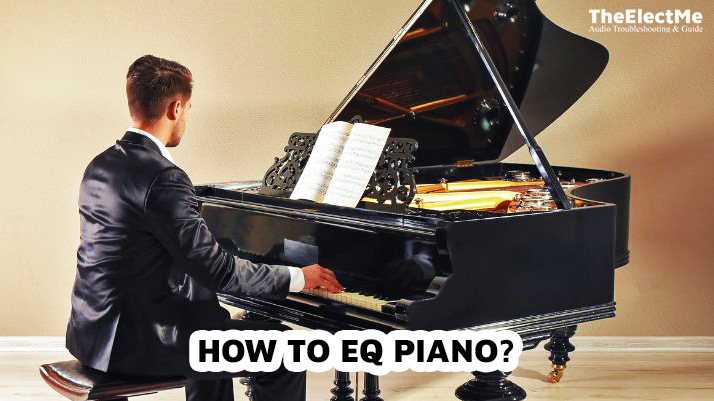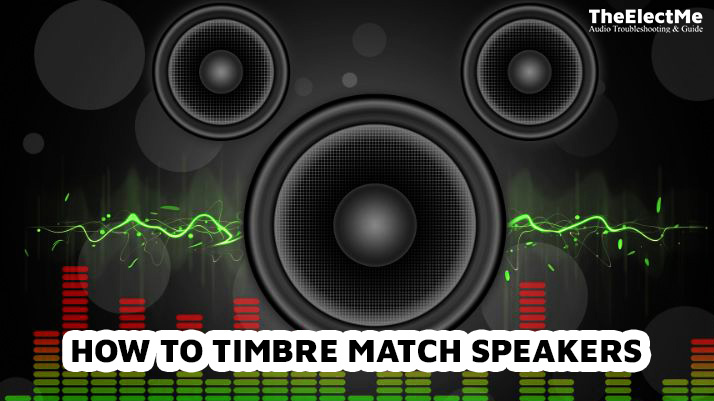How to EQ piano? Setting the right equalization for your piano can make a huge difference in how it sounds. From cleaning up muddy bass to making the upper notes sparkle, EQ is an essential tool for achieving a balanced and clear sound.
Equalizing, or EQ, plays a crucial role in music production. It’s a process that allows the enhancement and balance of certain frequencies in sound. For musicians and producers, it’s a significant tool to ensure optimal audio quality.

Proper EQing helps highlight its richness and depth. It can bring out the best in a piano’s sound, making it crisp, clear, and balanced.
Let’s start with the tools and equipment you’ll need before diving into the step-by-step guide.
Related Post: How Wide Is A Piano In Inches?
What Are The Tools Needed To EQ Piano?
To EQ a piano effectively, several key tools and software are necessary. Here’s a short list:
- EQ Software: Digital Audio Workstations (DAWs) like Ableton Live, Logic Pro X, and FL Studio offer built-in EQ tools. These tools allow you to visualize and manipulate the frequency spectrum of your piano sound.
- Quality Microphones: The type and placement of microphones can greatly affect the sound you’re trying to EQ. Consider investing in condenser microphones for their sensitivity and broad frequency response, ideal for capturing the wide range of tones a piano can produce.
- Audio Interface: An audio interface converts the analog signal from your microphone into a digital format your EQ software can manipulate. It also provides necessary amplification.
- Good Quality Headphones or Monitors: To accurately hear the changes you’re making with your EQ, quality headphones or studio monitors are essential.
After gathering the necessary tools, it’s time to dive into the process of EQing your piano.
Related Post: Types Of Pianos: A Comprehensive Guide
Step-By-Step Guide: How To EQ Piano?
To EQ piano like a pro, follow these steps:
Step No 1: Identifying Frequencies
When it comes to EQing a piano, the first step is to identify the key frequencies that need adjustment. Here are three common frequency ranges to consider:
Low Frequencies
Low frequencies, typically ranging from 20 Hz to 250 Hz, primarily deal with the bass notes on a piano. These frequencies give the piano its warm, rich tones.
However, if they are too pronounced, they can make the sound muddy or boomy. When EQing, it’s crucial to ensure these frequencies aren’t overpowering the rest of the sound.
Mid Frequencies
Mid frequencies, spanning from 250 Hz to 2000 Hz, form the ‘body’ of the piano sound. The bulk of the musical content lies in this range. It’s where the core notes and harmonics of the piano reside.
A well-balanced midrange can give your piano a full, resonant sound. But, too much emphasis on mid frequencies can result in a boxy or nasal tone.
High Frequencies
High frequencies, typically anything above 2000 Hz, represent the brilliance and clarity of the piano. They add sparkle and definition to the sound. These frequencies capture the attack of the keys and the subtle overtones that give the piano its unique character.
However, overly boosted high frequencies can lead to a harsh, thin, or tinny sound. Therefore, careful adjustment is needed to maintain a balanced and natural sound.

Step No 2: Adjusting Frequencies
The process of adjusting frequencies involves using your EQ software to either boost or reduce certain frequency ranges. Here is a simple guide:
- Start with a flat EQ: This allows you to hear the natural sound of the piano before making any adjustments.
- Identify problematic frequencies: Listen for frequencies that stand out as too harsh or too muted. These are the areas you’ll want to adjust with your EQ.
- Make adjustments: Use your EQ software to reduce or boost the identified frequencies. Remember, subtle changes can have a big impact. It’s best to make small adjustments and then listen to the effect.
- Repeat the process: EQing is an iterative process. You may need to go back and forth several times to achieve the desired sound.
Step No 3: Fine-Tuning Your Piano EQ
Fine-tuning your piano EQ involves more detailed adjustments to perfect the sound. Here are some tips:
- Use a spectrum analyzer: This tool can provide a visual representation of your piano sound, making it easier to identify areas that need adjustment.
- Don’t overdo it: It’s easy to get carried away with EQ adjustments. Remember, the goal is to enhance the natural sound of the piano, not completely change it.
- Listen in context: If the piano is part of a larger mix, always listen to your EQ adjustments in the context of the full mix. What sounds good solo may not work when other instruments are added.
- Trust your ears: While tools and visual aids can be helpful, ultimately the most important tool is your ear. If it sounds good to you, it probably is good.
Let’s go with the advanced technology and software to achieve the right EQ for your piano.

Advanced Piano EQ Techniques
To take your piano sound to the next level, here are advanced EQ techniques you can use:
Using Advanced EQ Plugins
Many musicians and producers turn to advanced EQ plugins to fine-tune their piano sound. These plugins offer a more sophisticated set of tools and features than basic EQ software, allowing for greater precision and control.
There are several types of advanced EQ plugins available:
- Parametric EQ: This is perhaps the most flexible and powerful type of EQ. It allows you to select specific frequency bands and adjust the width (Q) of these bands. This means you can hone in on very specific frequencies.
- Dynamic EQ: A dynamic EQ allows you to apply EQ changes dynamically based on the input signal. For example, you could set the EQ to boost certain frequencies only when they fall below a certain threshold.
- Linear Phase EQ: This type of EQ is useful for avoiding phase issues that can occur when EQing multiple tracks. It ensures that all frequencies are affected equally, preserving the natural phase of the sound.
To use an advanced EQ plugin for piano EQ, follow these steps:
- Install the Plugin: Most EQ plugins are available as VST, AU, or AAX plugins. Download the correct version for your DAW and install it following the manufacturer’s instructions.
- Select the Plugin on Your Piano Track: Open the plugin list on your piano track and select the EQ plugin from the list.
- Identify Problem Frequencies: Use the plugin’s spectrum analyzer or your ears to identify frequencies that need adjustment.
- Make Adjustments: Use the plugin’s controls to make the necessary adjustments. Remember to be subtle – drastic changes can make the piano sound unnatural.
- A/B Compare: Most plugins have an A/B comparison feature. Use this to compare your EQ sound with the original sound. This can help you decide whether your changes are improving the sound or not.
- Save Your Settings: If you’re happy with your EQ settings, save them as a preset. This can save you time when EQing similar piano sounds in the future.
Remember, while advanced EQ plugins can give you more control, they also require more knowledge and experience to use effectively. Always trust your ears and don’t be afraid to experiment.
Final Thoughts – How To EQ Piano?
To summarize, EQing your piano involves understanding the frequency ranges and making targeted adjustments to enhance its natural sound. It takes practice, patience, and a good set of ears to achieve the perfect piano EQ.
With the help of advanced technology and plugins, you can take your piano sound to new heights. Always remember to trust your ears, use visual aids as a guide, and make subtle adjustments for the best results.
So go ahead and start experimenting with EQ settings on your piano tracks – who knows, you may just discover a whole new world of sound.



